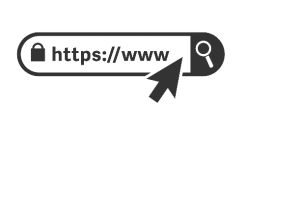
09 Dec Shopping online? Follow these approaches to keep your data safe
The growth in popularity and reliability of online shopping in the UK over the past decade is indisputable. Advancements in payment gateways, increased business adoption of eCommerce websites and growing customer familiarity with the benefits of shopping online have aided this.
The pandemic also played a part in accelerating business and customers’ interaction with online transactions. A survey this year by EVO Payments noted that more than half of UK shoppers were encouraged to shop online because of the pandemic with around a third planning to use card payments and virtual wallets while shopping online more often from now on.
To keep pace with this growing appetite and to ensure consumer protection, there have been continual enhancement in security and safety features to protect consumers and merchants from fraud. Strong Customer Authentication (SCA) is scheduled to be introduced early next year, adding an extra layer of protection to make online transactions more secure. Many of the larger eCommerce companies have already started implementing this security approach.
It will require multi-factor authentication on all payer-initiated payments using at least two of the methods below. 
However, online fraud will always remain a threat with criminals adapting to transactional behaviours and devising ways to leave customers out of pocket or steal their personal information. UK Finance noted online fraud against retailers increased by 9% in 2020, totalling an estimated £262.3 million in 2020.
Here’s some steps you can take as a customer to remain vigilant when shopping.
Know your digital surroundings
The surrounds of a physical premises gives the consumer an immediate indication of the legitimacy and trustworthiness of a business. A buyer will know if they can trust a business by using their judgement when assessing the quality of the product and service, checking the descriptions and prices and talking to staff. A similar approach should be made when making a purchase on your laptop, phone or tablet as more of our experiential shopping experiences go digital.
 To ensure the authenticity of the eCommerce website, always check that the url or domain name looks legitimate. You should notice “https://” (Hypertext Transfer Protocol Secure) at the beginning of most website addresses. HTTPS has become the standard for most websites (so much so that if a website starts with http, Google will flag it as not secure) ensuring authentication and protection of any exchanged data and helps validate the digital bricks and mortar of a business. Depending on your browser you should see a padlock or similar to the left of the url on your address bar.
To ensure the authenticity of the eCommerce website, always check that the url or domain name looks legitimate. You should notice “https://” (Hypertext Transfer Protocol Secure) at the beginning of most website addresses. HTTPS has become the standard for most websites (so much so that if a website starts with http, Google will flag it as not secure) ensuring authentication and protection of any exchanged data and helps validate the digital bricks and mortar of a business. Depending on your browser you should see a padlock or similar to the left of the url on your address bar.
While we can’t feel or touch a product online, we can analyse the accuracy of descriptions on a webpage with a careful eye for any tell-tale signs. Spelling and syntax errors, inaccurate descriptions and low-quality images could be an indication of a false page. Prices seeming too good to be true may prove to be just that. Analysing a website’s about us or contact page can hold further clues with no physical premises, inaccurate email addresses and fake phone numbers being potentially indicative of a fraudulent website.
This prudence should carry over to how we interact with items on social media sites and through apps on Android devices too. Both are equally susceptible with the ease and efficiency scammers can set up multiple fake accounts on social media platforms and fraudsters taking advantage of open-source technology to create applications that steals users’ data.
Check before you click
It can be tempting to click on a post or an online pop-up offering you the chance to win a lucrative prize. By clicking on an unsecure link or submitting personal information through them you might be compromising your security and opening yourself up to targeted phishing campaigns, unauthorised purchases from your bank account, potential identity theft or exposing your passwords to fraudsters.
Criminals can use this information to create a prescriptive and scheduled campaign, targeting users on a cyclical basis, demonstrating that online crime no longer has a once off impact. If you feel you might be a victim of phishing, it’s best to keep a regular eye on your statements for any irregularities and any suspicious activities should be reported to your bank immediately.
If you aren’t sure, don’t click. It’s better to ring the business associated with it to check its validity.
Use Wi-Fi networks you can fully trust
Be wary of shopping in public spaces with Wi-Fi hotspots. It is generally considered best practice to shop on a private and secure network as it’s impossible to know how safe a public Wi-Fi hotspot may be, even if offered by a trusted company. Routers can be scanned by hackers to find vulnerabilities that could then be exploited to intercept and capture valuable data.
 Hackers can also create their own rogue hotspots imitating nearby establishments where an unsuspecting customer could be doing their online shopping and gain access to any information sent and received over that network.
Hackers can also create their own rogue hotspots imitating nearby establishments where an unsuspecting customer could be doing their online shopping and gain access to any information sent and received over that network.
There is also the danger of opportunists recording your card details when making an online card payment in an open area when shopping using public Wi-Fi in a shopping centre or café, for example.
Think of using your digital card
The digital wallets revolution has reduced our reliance on our cards since they were introduced to the UK market in the latter half of the past decade. Similar to the in-store experience, paying with your phone for online purchases replaces your card with a unique digital card number – removing the risk of your actual card number being copied – and you can confirm your identity securely with every transaction by pin, fingerprint or facial recognition. This approach to online payments will likely grow more popular given that 22% of UK shoppers claimed they will use virtual wallets more often than before the pandemic, more than other European nations.
Whatever you might be shopping online for keep these key points for your own financial security and peace of mind.
- Assess the eCommerce website’s environment to ensure it’s legitimate.
- Be cautious before clicking on links regardless if you receive them via text, email or through social media.
- Only make transactions on a secure network and in a safe area.
- Consider using your digital wallet instead of your physical card to make online payments.


